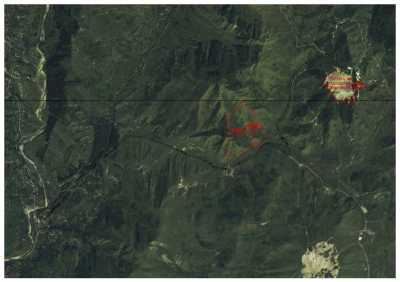The WPJ
THE WORLD PROPERTY JOURNALReal Estate Facts Not Fiction
Commercial Real Estate News

U.S. Supply Chain Being Reshaped by New Technology, Automation
Commercial News » Los Angeles Edition | By Michael Gerrity | September 16, 2016 8:02 AM ET
Warehouse Automation, 3D Printing, Self-Driving Vehicles Driving Change
According to a new report from CBRE Group, rapidly emerging advancements in technology such as autonomous trucks, 3D printing and warehouse automation will foster dramatic changes in how shippers, retailers and manufacturers configure their supply chains and distribution strategies, spurring a need for different formats and locations for industrial real estate.
Taken together, these advancements will encourage industrial users to modernize their networks to adapt to the fast-evolving market rather than inherently requiring them to add more or fewer warehouses and distribution centers. Each of these technology categories are on track to reach widespread use by 2025.
"Autonomous vehicles, 3D printing and warehouse automation stand to reshape supply chains on an unprecedented scale, but real estate won't be innovated out of that equation," said David Egan, CBRE's Head of Industrial & Logistics Research in the Americas. "While use of autonomous vehicles in shipping likely will allow for a greater emphasis on a few massive distribution centers in far-flung, less expensive locations, 3D printing meanwhile will result in many users needing more industrial space closer to customers to facilitate on-demand, custom manufacturing."
The CBRE report includes in-depth examinations of each of the three areas of technological advancement and their likely impact on the industrial and logistics markets.
- Autonomous trucking: Labor represents roughly 75% of the cost of shipping a full truckload across the U.S., and drivers are limited to 70 hours of driving a week, equating to 3,000 miles. The advent of autonomous vehicles will allow cargo to travel greater distances in less time, saving costs. This, in turn, will allow some users to operate more extensively from large distribution centers in outlying locations, where land is less expensive.
- 3D Printing: The ability to manufacture certain items on-demand will spur a horizontal shift in the supply chain. Whereas this advancement may lessen the need for centralized distribution space in some cases, it also increases the requirement for bulk, raw materials to be stored at printing sites close to the consumer in last-mile distribution facilities.
- Automation in industrial facilities: A greater use of robots and other automated technology stands to reduce labor costs and increase efficiency. However, it also will stoke demand for modernized industrial buildings equipped to accommodate the design requirements and IT infrastructure of automation.
Sign Up Free | The WPJ Weekly Newsletter
Relevant real estate news.
Actionable market intelligence.
Right to your inbox every week.
Real Estate Listings Showcase

€1,600,000
Residential Land For Sale
Scortoasa, Romania

$2,800,000
Commercial New Construction For Sale
General Luna, Philippines

$1,200,000
Residential Land For Sale
Puerto Escondido, Mexico

$350
Home For Rent
Lake Arrowhead, California

€240,000
Home For Sale
Central Istria, Croatia

5,300,000 CAD
Home For Sale
Mission, Canada

$1,350,000
Mixed Use For Sale
Huaraz, Peru

$8,195,000
Home For Sale
Isle of Palms, South Carolina

$740,000
Home For Sale
West Palm Beach, Florida

$750,000
Mixed Use For Sale
Corozal, Belize

49,000,000 THB
Villa For Sale
Hua Hin, Thailand

$1,475,000
Townhome For Sale
Phoenix, Arizona
Related News Stories
Commercial Real Estate Headlines
- 2025 Prediction: U.S. Commercial Investment Recovery Expected to Gain Traction
- Holiday Retail Sales for 2024 to Hit Record $1 Trillion
- Tech, AI Industries Drive Largest Share of Office Leasing Activity in U.S.
- Commercial Real Estate Lending in U.S. Enjoys Strong Growth in Q3
- U.S. Multifamily Market Begins Recovery in Q3
- Commercial Investment in Japan Spikes 24 Percent Annually in Q3
- Despite Return-to-Office Mandates, U.S. Office Vacancies Continue to Rise
- PROPSIG Tech Startup Acquired by World Property Data
- U.S. Commercial Mortgage Debt Hits $4.7 Trillion in Q2 as Delinquencies Increase
- Hong Kong Class A Office Rents Continue to Downtick in Mid-Summer
- U.S. Office Landlords Tenant Concessions Decline for First Time in 4 Years
- U.S. Commercial Mortgage Originations Spike 27 Percent in Q2 Over Q1
- Phnom Penh's Commercial Office, Retail Markets Face Slowdowns in 2024
- Global Edge Data Center Market to Hit $300 Billion by 2026
- Commercial Property Transactions in Japan Dive 25 Percent Annually in Q2
- Delinquency Rates for U.S. Commercial Property Loans Downticks in Q2
- Megawarehouse Lease Deals in U.S. Increase in 2024
- Office Tenants' Flight to Quality Buildings Increases in 2024
- Commercial Lending in Japan Upticks 6 Percent Annually in Q1
- AI Driving Significant Global Data Center Growth in 2024
- Total U.S. Commercial Mortgage Debt Rises to $4.7 Trillion in Q1
- U.S. Commercial Mortgage Delinquencies Rise in Early 2024
- Asia Pacific Office Sector to Further Reprice Throughout 2024
- U.S. Retail Foot Traffic to Surpass Pre-Pandemic Levels by 2025
- Commercial Real Estate Lending in U.S. Slowed in First Quarter
- Japan Commercial Property Investment Volume Jumps 7 Percent in Q1
- Asia Pacific Commercial Property Investment Leads the World, Spikes 13 Percent
- Driven by High Rates, U.S. Commercial Lending Imploded 47 Percent in 2023
- After Two Year Slump, Prime Multifamily Metrics Uptick in U.S.
- Commercial Co-Broker Commissions Not Affected by NAR-DOJ Settlement, Yet
- U.S. Office Buildings with Upscale Tenant Amenities Still Enjoy Premium Rents in 2024
- U.S. Commercial, Multifamily Mortgage Delinquency Rates Uptick in Q4
- U.S. Commercial Mortgage Debt Continued to Rise in 2023, Hits $4.7 Trillion
- Nonresidential Construction Spending in the U.S. Falls Sharply in January
- U.S. Multifamily Construction Starts to Decline in 2024
- Commercial Mortgage Lending in U.S. Shows Signs of Stabilization in Late 2023
- Architecture Billings Decline in December as Soft Business Conditions Persist
- Government Sector Claimed Largest Portion of 100 Biggest U.S. Office Leases Signed in 2023
- U.S. Commercial, Multifamily Borrowing Dives 25 Percent Annually in Late 2023
- Record High Multifamily Construction Deliveries Drive Vacancy Rates Higher
Reader Poll
In 2025, which region of the world are you most likely to buy or invest in real estate?





